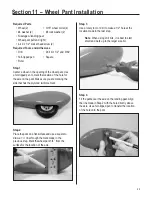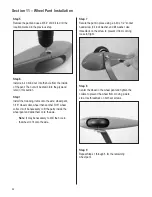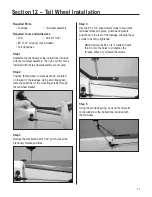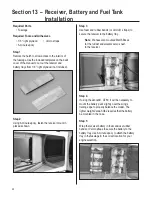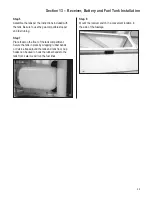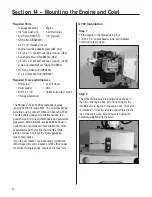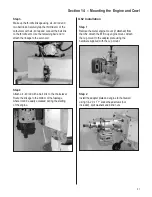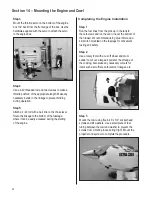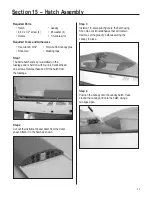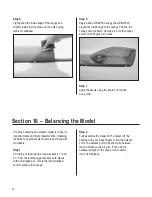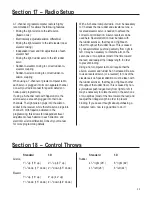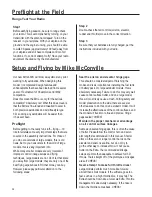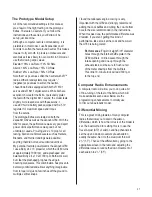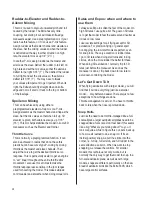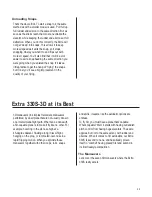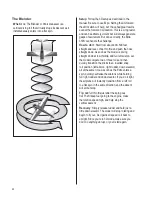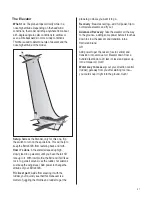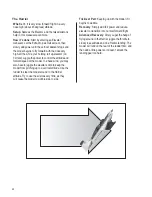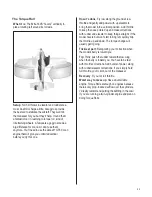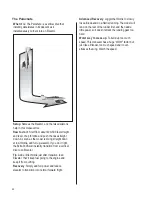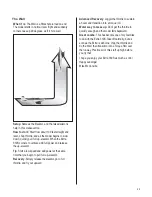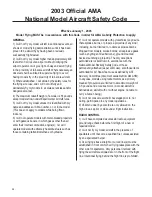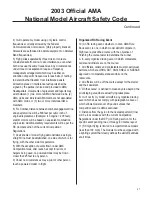
39
Unloading Snaps
That’s the whole trick. To start a snap roll, the same
method as with a smaller model is used. Pull full up,
full rudder and aileron in the same direction. But as
soon as the sticks reach the corners, neutralize the
elevator, while keeping the rudder and ailerons at full
deflection. When you do this correctly, the Extra will
not get “deep” into snaps. This allows it to keep
more airspeed as it exits the snap, so it stops
snapping where you what it to and flies out with
more air speed. You’ll also find that it will be a lot
easier to exit a snap heading the same direction you
were going when you entered the snap. It’ll take a
little practice to get the hang of “flying” the snaps,
but I’ll bet you’ll see a big improvement in the
quality of your flying.
Extra 330S-3D at its Best
3D maneuvers (in simplest terms) are maneuvers
performed by an airplane that are not usually done in
a normal airplane flight path. What can be done with
a 3D-capable plane is to make it fly like no other. For
example, hovering in the air nose high at a
45-degree descent, floating along in level flight,
hanging on the prop, or tumble tail-over-nose in a
rapid flipping motion. When you sprinkle these
maneuvers together with other loops, rolls, snaps
and spins, it seems like the aerobatic options are
endless.
To fly 3D, you must have a plane that’s capable.
What’s capable? Well, it starts with having outlandish
pitch control from having huge elevators. The same
applies, but not to the same extent, with rudder and
ailerons. When it comes to 3D aerobatics, our Extra
330S is second to none, and has already proven
itself in “combat” having placed first and second in
its first freestyle competition.
The Maneuvers
Let’s cover the seven 3D maneuvers where the Extra
330S really excels.

